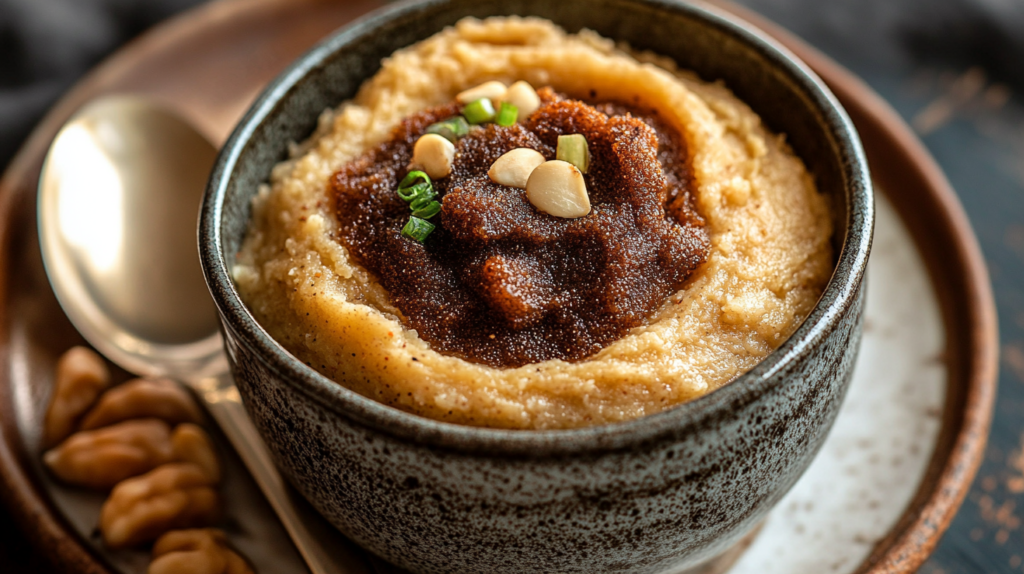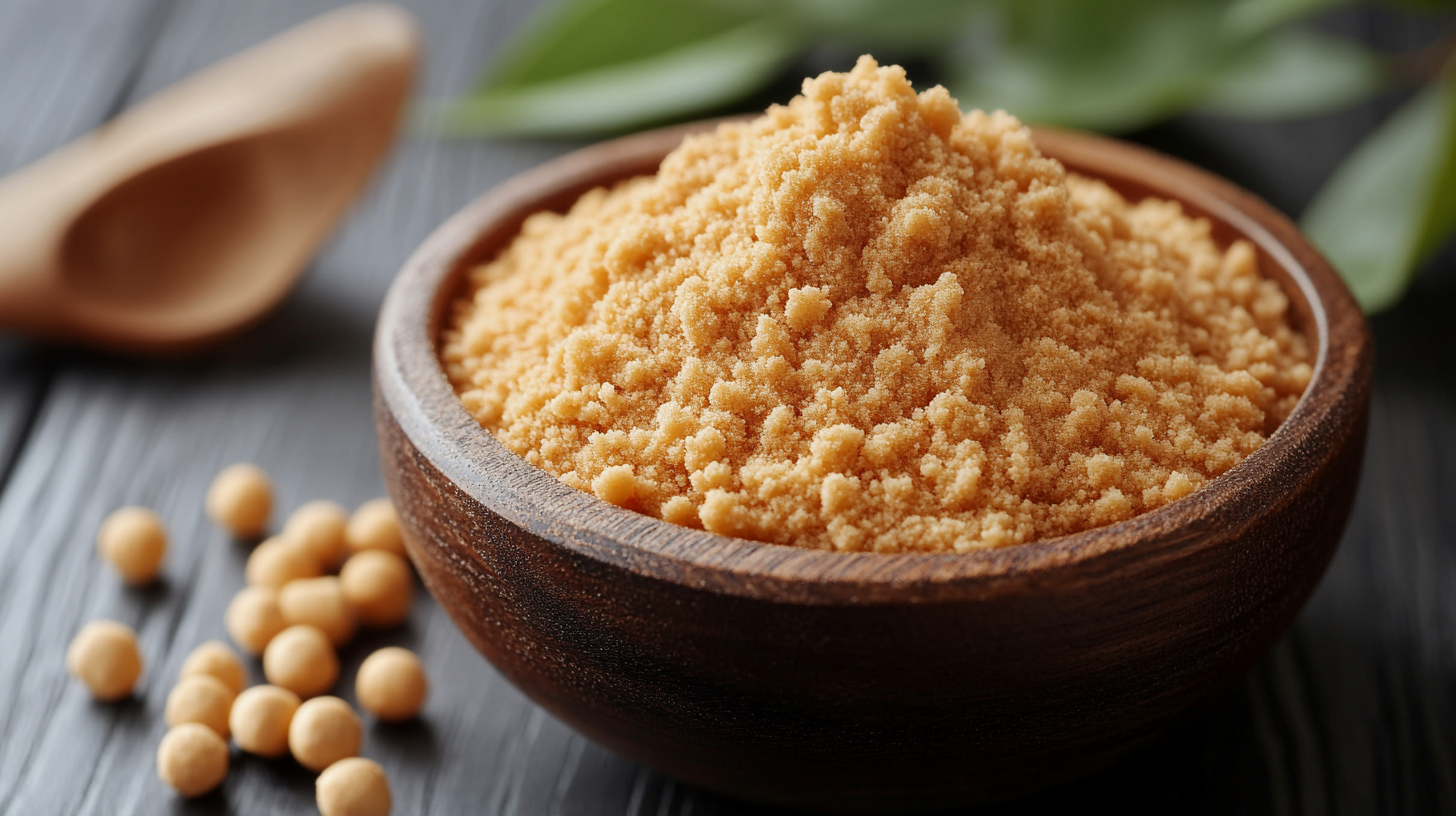Miso, a deeply flavorful paste originating from Japan, is made by fermenting soybeans with salt and koji, a special mold starter. This umami-packed ingredient is a cornerstone in Japanese cuisine, giving everything from soups to sauces a distinct savory boost. Over centuries, miso has evolved, adapting to regional preferences, which has resulted in a variety of flavors and colors. Today, miso is valued worldwide not only for its unique taste but also for its potential health benefits.
In this guide, we’ll explore everything you need to know about miso. From understanding its different types to uncovering its nutritional value, you’ll find tips on how to store miso and integrate it into your cooking routine, making it a versatile addition to your culinary repertoire.
What Is Miso?
Origins and History of Miso
Miso’s story dates back centuries, originating in China before arriving in Japan around 600 AD. This unique paste soon became a staple in Japanese cooking, with monks and chefs alike adopting it for its rich, savory flavor and nutritional value. By 1200 AD, miso was widely used across Japan, valued for its deep umami essence, achieved through careful fermentation.
How Miso is Made
The production of miso involves fermenting soybeans with salt and koji, a special mold culture that aids in the fermentation process. Koji acts as the catalyst, breaking down the soybeans and other ingredients to release an intense umami flavor. Different fermentation times and ingredient ratios yield various types of miso, each with distinct textures, flavors, and colors.
Types of Miso
- White Miso (Shiro Miso): Mild and slightly sweet, white miso is made with a high proportion of rice, resulting in a shorter fermentation process.
- Red Miso (Aka Miso): With a longer fermentation time, red miso has a darker color and a saltier, bolder flavor.
- Mixed Miso (Awase Miso): This balanced miso combines white and red miso, creating a versatile option suitable for various dishes.
In the next section, we’ll explore the distinct flavors of these miso varieties and how each type is best used in different recipes, giving you the knowledge to make the most of this powerful ingredient.
Types of Miso and Their Best Uses
White Miso (Shiro Miso)
White miso, or shiro miso, is known for its mild and slightly sweet flavor, thanks to a shorter fermentation time and a higher rice content. Its delicate taste makes it versatile for everyday recipes.
- Best Uses:
- Miso Soup: Perfect for light and creamy miso soups, adding a touch of sweetness without overpowering other ingredients.
- Salad Dressings: Mix white miso with vinegar and oil for a tangy yet mild dressing.
- Glazes for Fish and Vegetables: White miso’s mild flavor makes it ideal for marinades and glazes, enhancing foods without overwhelming them.
Red Miso (Aka Miso)
Red miso, or aka miso, undergoes a longer fermentation process, giving it a deep reddish-brown color and a stronger, saltier taste. This bold flavor is suited to heartier recipes that can balance its intensity.
- Best Uses:
- Hearty Stews and Soups: Red miso adds depth to stews, especially with root vegetables, mushrooms, and tofu.
- Marinades for Meat: Its strong flavor pairs well with meat marinades, infusing dishes with rich umami notes.
- Ramen Broth: A common addition in ramen broths, red miso gives a bold base for complex flavors.
Mixed Miso (Awase Miso)
Awase miso, a blend of red and white miso, offers a balanced flavor profile that’s neither too strong nor too mild. This versatility makes it a great all-purpose miso, ideal for various dishes.
- Best Uses:
- Soups and Stews: Balanced enough for light soups and robust enough for stews.
- Versatile Marinades: Use in marinades for both meats and vegetables.
- Sauces and Dressings: Adds just the right amount of flavor to sauces for pasta, rice dishes, or even as a dip for fresh vegetables.
Specialty Misos
In addition to these common types, there are specialty misos crafted with unique ingredients or regional methods, like barley miso (mugi miso) or soy miso (hatcho miso), each with its own unique flavor.
Understanding these different types allows you to experiment and find the right miso for each culinary need. In the following section, we’ll uncover the health benefits of miso, showcasing how it brings more than just flavor to your meals.
Nutritional Benefits of Miso – Health in Every Spoonful
Miso is not only flavorful but also packed with nutrients that offer numerous health benefits. Here’s a closer look at how miso’s ingredients contribute to a balanced diet.
Protein-Rich and Low in Calories
Miso is an excellent source of plant-based protein, making it ideal for vegetarian and vegan diets. Additionally, it’s low in calories, making it a healthy choice for adding flavor without excess calories.
Source of Essential Vitamins and Minerals
Miso contains B vitamins, particularly B12, which is rare in plant-based foods, making it valuable for vegans. It also provides essential minerals such as iron, zinc, magnesium, and calcium, supporting everything from immunity to bone health.
Probiotic Powerhouse
Miso’s fermentation process results in beneficial bacteria, or probiotics, which support gut health. These probiotics help improve digestion, promote nutrient absorption, and contribute to a stronger immune system.
Contains Antioxidants
The antioxidants in miso help combat oxidative stress and inflammation in the body. These compounds, including vitamin K and manganese, are believed to reduce the risk of chronic diseases.
May Support Heart Health
Miso’s content of heart-healthy minerals and its ability to lower blood pressure make it a potential ally in heart health. Some studies suggest that its fermentation process might reduce sodium’s impact on blood pressure, although moderation is still advised.
With these health benefits, miso is a great ingredient for those looking to enrich their diet naturally. Next, we’ll explore various ways to incorporate miso into everyday meals, from breakfast to dinner.
Creative Ways to Use Miso in Cooking

Miso is extremely versatile and can enhance a variety of dishes beyond traditional Japanese cuisine. Here are some delicious ways to use miso throughout the day.
Breakfast Ideas
- Miso-Avocado Toast: Spread a thin layer of white miso on toast with avocado for a unique twist on a breakfast classic.
- Savory Miso Oatmeal: Add a teaspoon of miso to warm oatmeal, then top with green onions, sesame seeds, and a poached egg for a savory breakfast bowl.
- Miso Smoothie Boost: Add a small spoonful of miso to a green smoothie to enhance its umami flavor and increase nutrient intake.
Lunch and Snack Recipes
- Miso Soup: Combine miso with dashi broth, tofu, and seaweed for a comforting, traditional soup that’s quick and nourishing.
- Miso Salad Dressing: Whisk miso with vinegar, olive oil, and a touch of honey for a tangy and creamy salad dressing.
- Miso Hummus: Mix miso into homemade hummus for a creamy, umami-rich dip perfect for veggies or pita chips.
Dinner Inspirations
- Miso Marinade for Fish: Miso pairs beautifully with fish, especially salmon, adding a deep, savory flavor when used as a marinade before baking or grilling.
- Miso-Glazed Vegetables: Roast carrots, sweet potatoes, or Brussels sprouts with a miso glaze for a rich, caramelized side dish.
- Stir-Fry with Miso Sauce: Use miso as the base for a stir-fry sauce, mixing it with soy sauce, sesame oil, and garlic to add depth to vegetables and tofu.
Dessert Innovations
- Miso Caramel Sauce: Combine miso with caramel for a salty-sweet sauce that pairs perfectly with ice cream, brownies, or fresh fruit.
- Miso Brownies: Add a tablespoon of miso to brownie batter for a surprising umami twist that enhances the chocolate flavor.
- Miso Banana Bread: Incorporate a small amount of miso into banana bread batter for a subtly savory and complex flavor profile.
These ideas show that miso’s uses extend far beyond traditional dishes. It can elevate flavors in both sweet and savory meals, adding a unique umami boost to any meal.
How to Store and Preserve Miso
To retain its flavor and probiotics, proper storage of miso is essential. Here’s how to keep your miso fresh and full of flavor:
Refrigerator Storage Tips
If you’re planning to use miso frequently, store it in the refrigerator. Miso can last for several months in the fridge without losing its quality.
- Airtight Container: Store miso in a tightly sealed container to prevent it from absorbing odors from other foods.
- Top with a Thin Layer of Salt or Plastic Wrap: Adding a small amount of salt on top or pressing plastic wrap directly on the surface can help prevent oxidation, keeping it fresh longer.
- Avoid Direct Light: Miso’s color and flavor can fade if exposed to too much light. Keep it in a dark section of the fridge.
Freezing Miso for Longer Storage
For those who use miso occasionally, freezing it is a great option. Miso doesn’t fully freeze due to its salt content, making it easy to scoop from the freezer.
- Freeze in Portions: Divide miso into small portions in ice cube trays, then transfer to a freezer-safe container.
- Direct to Cooking: Miso cubes can go straight from the freezer to the cooking pot, making it convenient and mess-free.
By following these tips, you’ll ensure that your miso retains its fresh taste and nutrient quality for as long as possible.
Frequently Asked Questions about Miso
Here are some commonly asked questions about miso, providing clarity on its uses, benefits, and dietary considerations.
Can Miso Be Eaten Raw?
Yes, miso can be eaten raw. Many people enjoy it as a spread or a dressing ingredient without heating it. Eating it raw preserves its probiotic content.
Does Miso Contain Gluten?
Most traditional misos are gluten-free, but some misos, particularly those made with barley or other grains, may contain gluten. Always check the label if you’re following a gluten-free diet.
Is Miso Vegan?
Most miso is vegan, made from fermented soybeans, koji, and salt. However, some miso soups may contain fish-based dashi broth, so check ingredient lists if you’re vegan.
How Do I Know if Miso Has Gone Bad?
Spoiled miso may develop mold, an off odor, or an unusual change in color. If you notice these signs, discard the miso. When stored properly, though, miso can last many months.
Can Miso Help with Digestion?
Yes, due to its probiotic content, miso may support gut health by promoting beneficial bacteria in the digestive system.
Exploring the Global Influence of Miso
While miso is central to Japanese cuisine, it has gained popularity globally as a versatile, nutritious, and flavorful ingredient.
Miso in Western Cuisine
Miso’s rich umami quality has led to its integration into Western dishes, enhancing sauces, marinades, and even baked goods. Chefs worldwide use it in recipes beyond traditional Asian contexts, often pairing it with ingredients like maple syrup, butter, and dairy products to create fusion flavors.
Regional Misos and Flavor Innovations
Globally, there are variations and adaptations of miso that incorporate local flavors and ingredients. Korean doenjang, a close relative of Japanese miso, and even miso-inspired creations in European cuisine show how miso’s fermentation techniques are inspiring culinary innovations worldwide.
Final Thoughts on Miso – A Kitchen Essential for Flavor and Health
Miso is more than just a seasoning; it’s a nutrient-packed ingredient that has stood the test of time. From its humble beginnings in ancient Japan to its global popularity today, miso continues to be celebrated for its unique taste and health benefits. Whether you’re using it to enhance a soup, glaze vegetables, or create a new twist in dessert, miso is a culinary powerhouse.
Experiment with different types, try it in unexpected recipes, and embrace the countless ways miso can enrich your meals. In doing so, you’ll discover why this fermented paste has become a cherished ingredient in kitchens worldwide.

